Available 24/7
Available 24/7
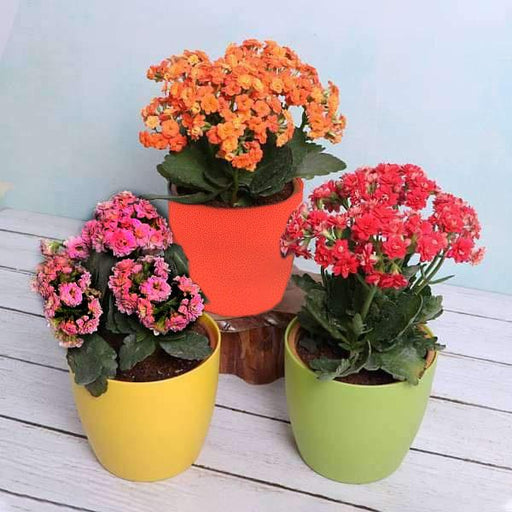
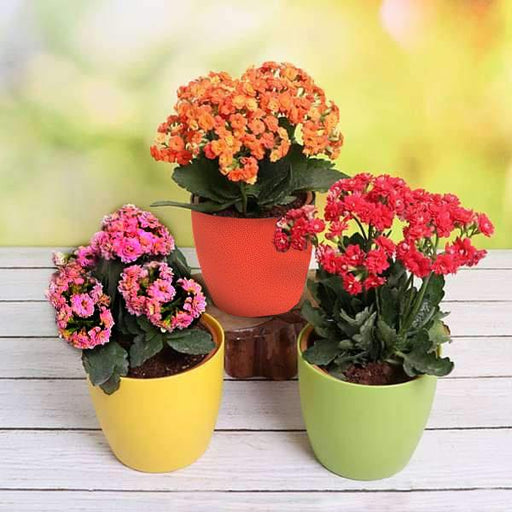 Save 10%
Save 10%
DescriptionThe Kalanchoes are thick leaved elegant flowering succulent houseplants. Make your home garden more vibrant and full of colors by bringi...
View full details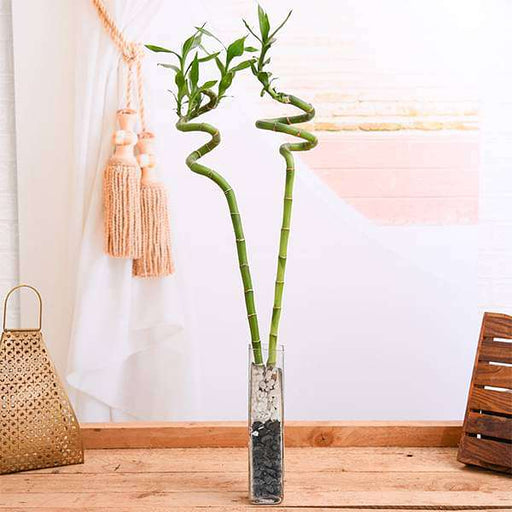 Save 18%
Save 18%
DescriptionThis pack contains two 60 cm Spiral Stick Lucky Bamboo Plant + Glass vase + 250g white chip pebbels + 250g black chip pebbels.About Luc...
View full details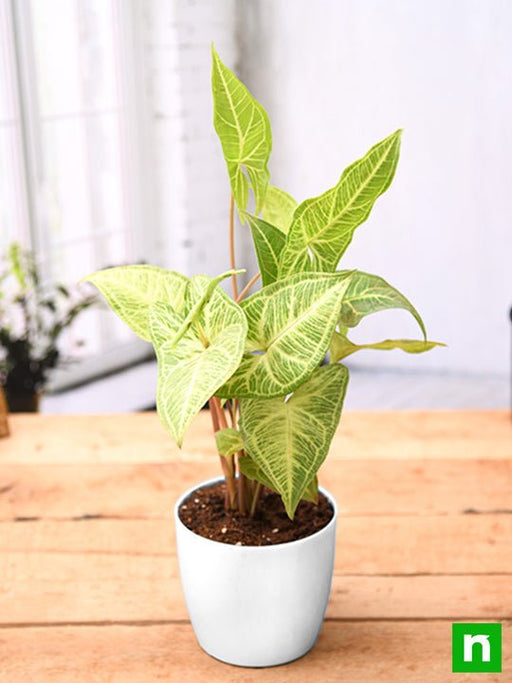

DescriptionIf the juvenile foliage along with a more compact plant is preferred, cut off all the climbing stems that develop, this will keep it bus...
View full details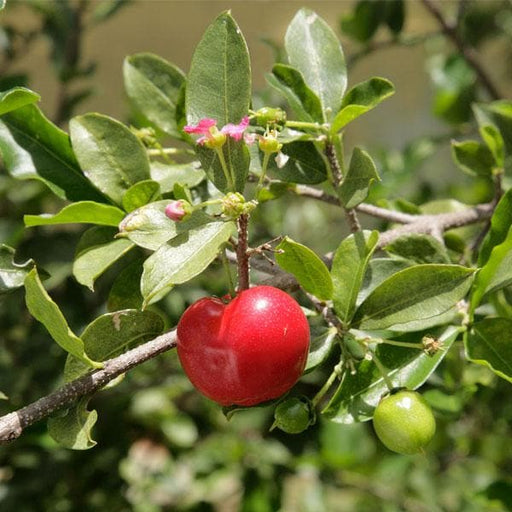 Save 15%
Save 15%
DescriptionGrowing Barbados Cherry is an easy way to add a tropical flair to your garden. When you know its important and how to care for Barbados ...
View full details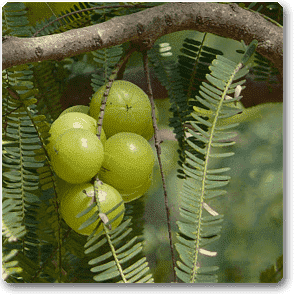 Save 17%
Save 17%
DescriptionImprove immunity of your all family member by growing a nutritious and vitamin rich an amazing Amla plant. Amla is a small to the medium...
View full details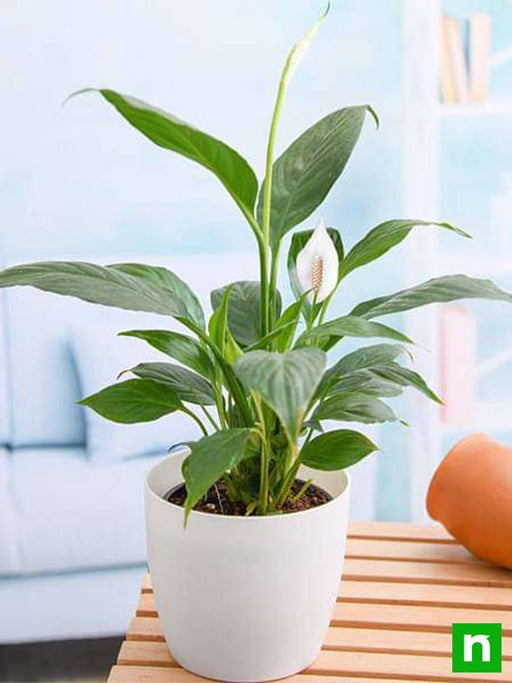
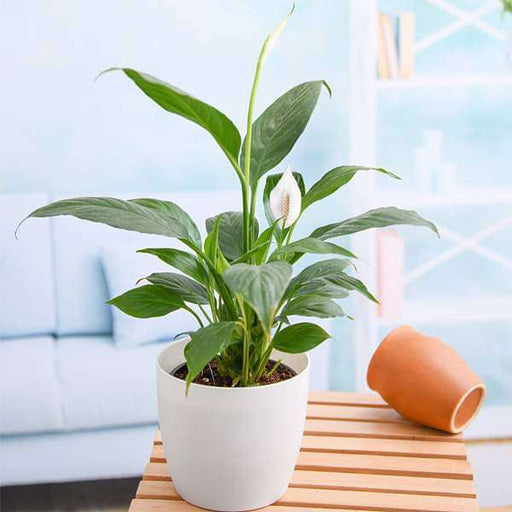 Save up to 15%
Save up to 15%
DescriptionPeace Lily Plant is a very popular and very rare indoor flowering houseplant. It is also an excellent air purifier plant.What makes it s...
View full details
 Save 20%
Save 20%
DescriptionFlowers make intimate connections they increase our connectivity with family and friends. Mogra plant is famously known as Jasmine flowe...
View full details
 Save 10%
Save 10%
DescriptionThe Kalanchoes are thick leaved elegant flowering succulent houseplants. Make your home garden more vibrant and full of colors by bringi...
View full details Save 45%
Save 45%
Description Pack of 4 succulents that are very easy to care for. A perfect pack to start growing plants worry-free. About You get 4 succulent plant...
View full details Save 12%
Save 12%
DescriptionAromatic plants bring into a room or house an often overlooked benefit. These plants have a pleasant scent.About You plant a hope when ...
View full details
 Save up to 50%
Save up to 50%
DescriptionIf you long for indoor greenery but have not succeeded with houseplants, consider these beautiful succulents. A perfect pack to start gr...
View full details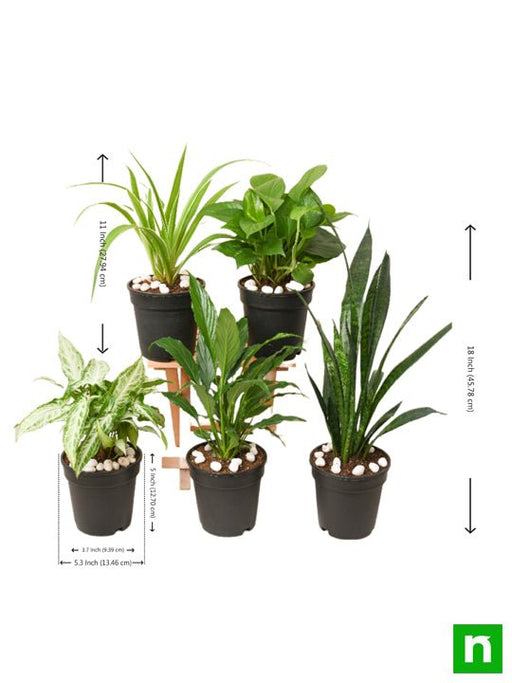
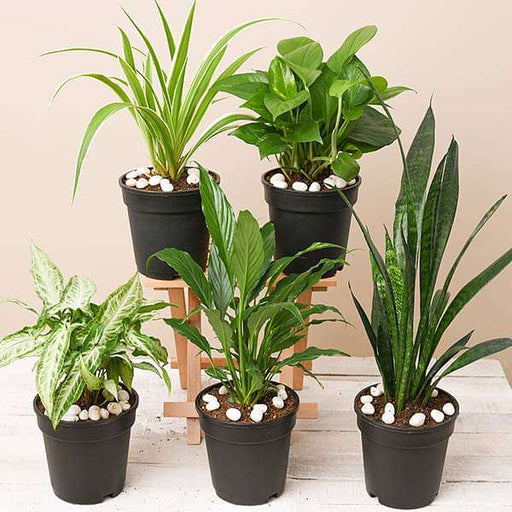 Save 21%
Save 21%
DescriptionThis plants pack contains amazing 5 houseplants + 5 Pots. Surround your home with these best pollution killer plants for a clean and hea...
View full details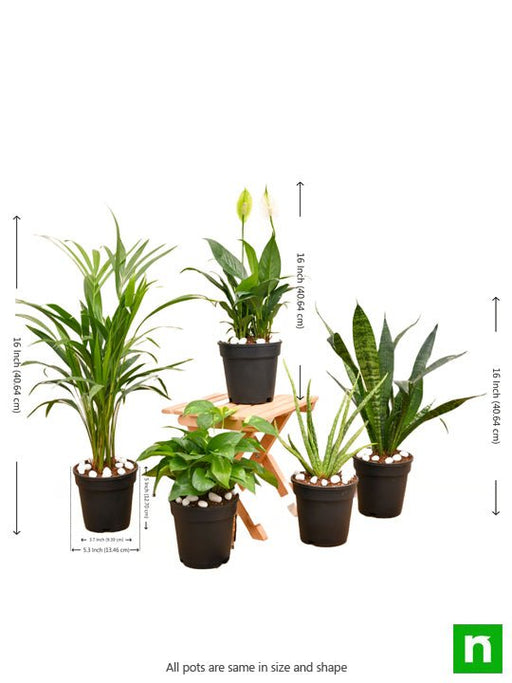
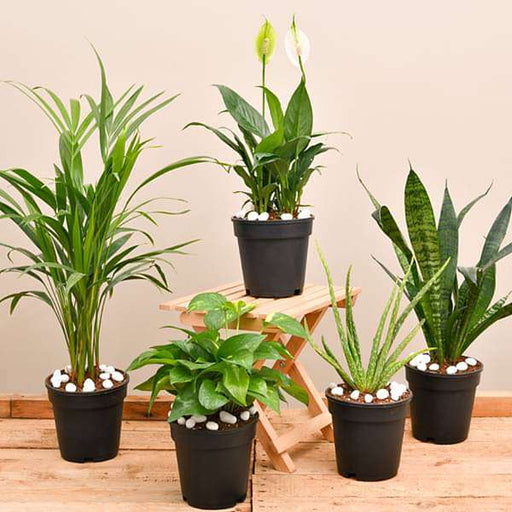 Save 20%
Save 20%
DescriptionIf you or anyone from your family wants to breathe fresh air, cleaner air in their homes, this 5 plants pack purify the air around and r...
View full details
 Save 40%
Save 40%
DescriptionSet of 2 Bonsai Looking Grafted Adenium PlantsAbout You get 2 Bonsai looking hardy grafted Adenium plants in a single pack.Plants are k...
View full detailsThe Money Plant is the most beloved plant for every home. Also known as Greenskeeper or Grower, Money Plant is regarded as the "Lucky plant," found in every second home. It is scientifically known as "Epipremnum aureum" and mostly grows in temperate zones.
As the name suggests; money plants are renowned to bring wealth and abundance to the house.
But do you have all 4 types of money plants?
The botanical name of Money Plant is Epipremnum aureum.
Green Money Plant has large, glossy, green heart-shaped leaves that can brighten any indoor space.
Money plant is the ideal plant for offices, shopping centers, hotels and other public areas as they are easy to maintain in low light and are efficient at removing indoor pollutants.
The leaves of these money plants have a creamy-white color. Marble Queens requires bright sunlight in order to retain their beautiful colors. So keep your plants in direct sun for at least 4-6 hours a day
This plant also goes by the name of Golden pothos or Devil’s ivy. The bright leaves are beautiful and have golden or yellow splashes.
They also look amazing in the hanging pots of your gardens and balconies.
These plants are quite hardy and hard to kill. They can grow well and stay green even in the absence of light.
The feature that differentiates the marble king plant from the marble queen is its distinct white and green colors on the leaves.
If you are looking for a plant to keep indoors, marble king is a great choice, as the variegated patterns of the leaves can add a really good touch to your interiors.
What are some of the most notable features of Money Plants?
Some of Money Plant's other names are Hunter's Robe, Solomon Islands Ivy, Silver Vine, Malabar Chestnut, and many more. Its ability to stay green in the dark is referred to as the Devil's Ivy or Devil's Vine.
A perennial plant, Money plant can be planted both outdoors and indoors. These are vivid green in color with gigantic, glossy, heart-shaped leaves and greasy white flowers. With a height of up to 400 m (1,312 ft.) tall and with stems up to 4 cm (2 in) in breadth, they can develop at more than 2 m in stature indoors when given a good mentor to climb.
How are Money Plants useful?
The most astonishing fact about the Money Plant is that it can produce seeds. They are great at filtering airborne pollutants such as Benzene, Formaldehyde, Carbon Monoxide, and Xylene, enhancing indoor air quality. The plant is mainly used as decor in many homes.
It is astounding to know that Money Plants act as anti-radiators inside your homes and office spaces against PCs, workstations, and cell phones. It also has some medical benefits such as diminishing nervousness, anxiety disorders, and releasing stress.
The new leaves of Money Plant can be eaten too. Their young leaves and blossoms are cooked as vegetables and even utilized as fixings. Indeed, even the seeds of Money Plants can be devoured.
It is said that the seeds of Money Plants taste like peanuts, and people cook the seeds to have a crunchy bite. In many parts of the world, these creepers tend to be planted to bring good fortune and wealth.
As per the Vastu shastra, the location and direction of your plant can have profound effects on your mental and financial well-being.
The money plant, according to Vastu guidelines is to be located in the southeast direction or the north entrance of the house.
Affixing it to your north entryway will provide you with a wealth of possibilities for career advancement and also new ways of earning income for residents of the home.
Utilize your entire positive energies by making them grow toward the sky. You should trim the stems frequently to keep them from falling to the ground.
If you're keeping your money plant near your bed, be sure to keep it away from the footrest or headrest. The plant's presence in your bedroom improves the quality of sleep and can help to combat anxiety.
Money plant generally grows well in direct sunlight in garden, in indoor places, or low light conditions. A partially sunny and partially shady area is also preferred for the good growth of money plants.
Money plants are both indoor and outdoor plants that according to Vastu and Feng Shui, kept anywhere will fill the house with prosperity and wealth.
This Plant is responsible for improving air quality, providing the home with good aesthetics and even improving your mental health
Money plants grow in both soil and water medium. You can propagate the plant from a stem and grow it in water until it develops roots.
The plants have softer and more succulent leaves in the water medium than those growing in a soil medium. This difference in succulence is due to the high absorption rate of water in money plants growing in water.
Money plants are known for their low maintenance requirements, making them a popular choice for indoor and outdoor gardening enthusiasts. To care for your money plant, make sure it receives bright, indirect sunlight and water it when the soil feels dry.
Money plant is a common name for several different plants, including Epipremnum aureum (also known as Devil's Ivy), Pachira aquatica (also known as the Money Tree), and Crassula ovata (also known as Jade plant). Each plant has its own unique characteristics and care requirements.
Money plants prefer well-draining soil that is rich in organic matter. A mixture of potting soil, sand, and perlite is ideal for these plants.
Pruning money plants can help maintain their shape and promote healthy growth. Use sharp, clean pruning shears to remove any dead or damaged leaves and stems.
While money plants are generally easy to care for, they can be susceptible to pests such as spider mites and mealybugs. Regularly inspect your plant for signs of infestation and treat promptly if necessary.
Money plants do not require much fertilizer, but can benefit from occasional feeding during the growing season. Use a balanced fertilizer every 2-3 months to promote healthy growth.
Propagating money plants can be done through stem cuttings or leaf cuttings. Stem cuttings should be taken from a healthy plant and rooted in soil or water. Leaf cuttings should be placed in soil and misted frequently until roots form.
Money plants prefer bright, indirect light. Avoid placing them in direct sunlight, as this can burn their leaves.
Money plants do not require high humidity levels and can tolerate dry conditions.
Money plants prefer temperatures between 65-75°F (18-24°C). Avoid placing them near cold drafts or hot air vents.
Some types of money plants, such as the Pachira aquatica (Money Tree), are toxic to pets and humans if ingested. Keep them out of reach of pets and children.
Devil's Ivy and Jade plants both have vibrant green leaves, while the Money Tree can have green or variegated leaves.
Devil's Ivy is native to the Solomon Islands and French Polynesia, while the Money Tree is native to Central and South America.
Money plants can range in size from small tabletop plants to large floor plants. Choose a size that fits your space and needs.
Money plants prefer to be on the dry side and can be susceptible to root rot if overwatered. Water sparingly when the soil feels dry and avoid letting the plant sit in standing water.
Devil's Ivy and Money Trees can produce small, inconspicuous flowers in the right conditions. However, they are primarily grown for their attractive foliage.
Devil's Ivy and some varieties of Jade plants can have variegated leaves, with a mix of green and yellow or green and white.
Pruning can also be used as a method of propagation for money plants. By taking stem cuttings and rooting them in soil or water, you can create new plants and expand your collection.
Money plants should be repotted every 1-2 years to provide fresh soil and room for growth. Choose a pot that is slightly larger than the current one and fill with fresh potting mix.
Money plants are often associated with wealth, prosperity, and good luck. In Feng Shui, they are believed to bring positive energy and financial abundance to the home or office. Money plants are often given as gifts during special occasions, such as weddings or business openings.
Money plants, also known as Pothos, are a popular indoor and outdoor plant that are known for their lush, green leaves and ability to grow in low light conditions.
There are several types of Money plants, including Golden Pothos, Marble Queen Pothos, and Jade Pothos.
Money plants require well-draining soil, regular watering, and a good fertilizer to thrive. They should be planted in a spot that receives bright and indirect sunlight.
Money plants can be planted any time of the year in India, as they are primarily grown indoors.
Money plants require infrequent watering, as they are drought-tolerant. Water them deeply once every two weeks, depending on the weather conditions.
You can use a balanced, all-purpose fertilizer to feed your Money plants. Apply it every two weeks during the growing season.
Yes, Money plants can grow in low light conditions, but they prefer bright and indirect sunlight.
Prune your Money plants regularly by removing any dead or damaged leaves and stems.
Money plants can be propagated through stem cuttings or division. Cuttings should be planted in well-draining soil and kept moist until they root.
To prevent pests and diseases on your Money plants, make sure to keep the soil moist but not waterlogged, and avoid overcrowding the plants. Use organic pesticides if necessary.
Money plants can live for several years if provided with proper care and maintenance.
Money plants can be kept indoors year-round in India, as they prefer warm and humid conditions.
Yes, Money plants can tolerate shade, but they prefer bright and indirect sunlight.
Money plant cuttings should be planted in well-draining soil and kept moist until they root. They can then be transplanted into their permanent pot or garden bed.
Yes, Money plants can grow outdoors in India, as long as the climate is warm and humid.
To control pests on your Money plants, use organic pesticides and insecticidal soap. You can also manually remove any pests you see on the plant.
Yellowing leaves on Money plants can be a sign of overwatering or nutrient deficiencies. Check the soil moisture levels and fertilize the plant as needed.
Wilting Money plants can be revived by watering them deeply and placing them in a shaded area for a few hours. If the problem persists, check the soil moisture levels and adjust your watering schedule.
Money plants require low to moderate humidity to thrive. You can increase humidity levels by placing a tray of water near the plant or by misting the plant with water.
Yes, Money plants can be grown in containers, as long as the container has good drainage and is filled with well-draining soil.
Leaf drop on Money plants can be a sign of overwatering, low humidity, or a nutrient deficiency. Adjust your watering and fertilizing schedule and increase humidity levels as needed.
When choosing a Money plant, consider the size and shape of the plant, and make sure it is healthy and free from pests or diseases. Additionally, choose a spot in your home that receives bright and indirect sunlight.
To protect your Money plants from pests like spider mites and mealybugs, use insecticidal soap or neem oil. You can also manually remove them with a damp cloth or cotton swab.
To prevent root rot in your Money plants, make sure to provide them with well-draining soil and avoid overwatering them.
Transplant your Money plants by carefully removing them from their current pot or garden bed and replanting them in a larger container or garden bed with fresh soil.
Make your Money plants bushier by pruning them regularly and providing them with adequate nutrition and water.
Inspect your Money plants for pests or signs of disease before bringing them home, and make sure to purchase them from a reputable nursery or garden center.
To ensure your Money plants are not overwatered, allow the soil to dry out slightly between watering, and avoid waterlogging the plant.
Yes, Money plants have air-purifying properties and can help remove toxins from the air. They are particularly effective at removing formaldehyde and benzene.
To ensure your Money plants maintain their color, make sure they are receiving adequate sunlight and nutrition. Additionally, avoid overwatering the plant, as this can lead to nutrient deficiencies and discoloration.